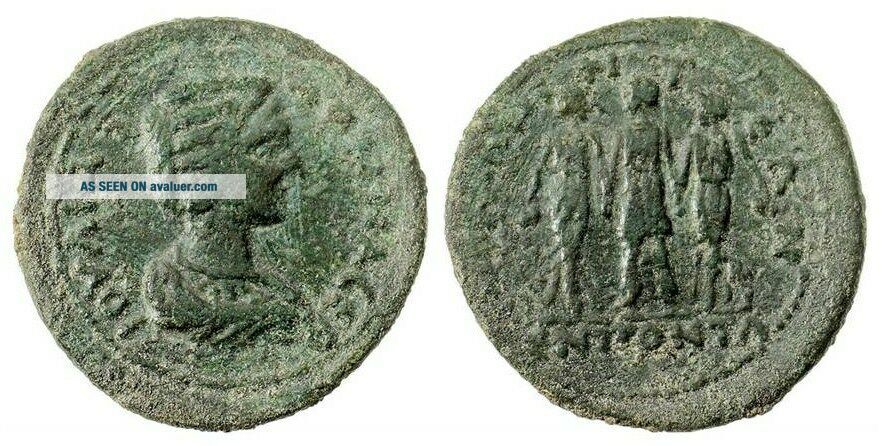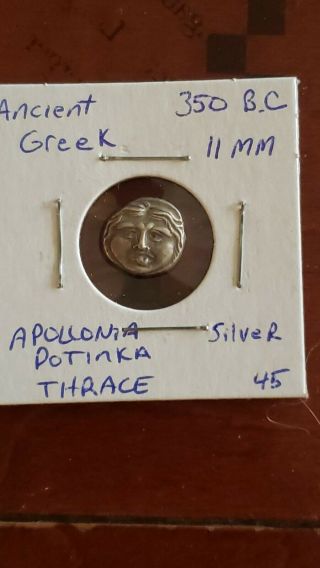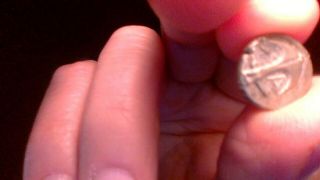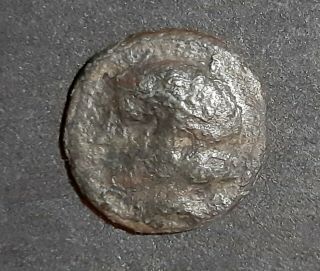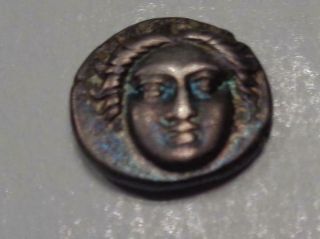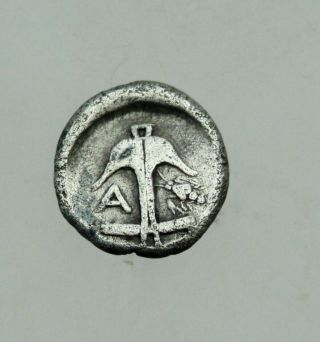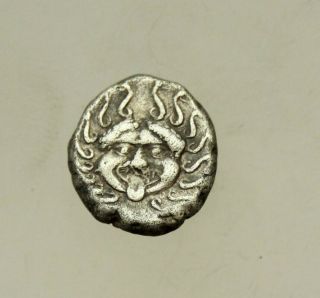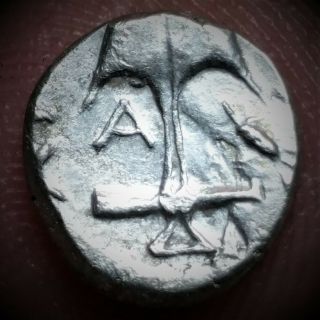Thrace, Apollonia Pontica Julia Domna THREE NYMPHS/GRACES Less Than 5 Known
Item History & Price
| Reference Number: Avaluer:9919568 |
THRACE, Apollonia Pontica
Julia Domna 192-211 ADÆ 24mm, 8.73g
Obv: Empress bust facing right;
IOYLIA DOMNA C
Rev: Three Nymphs arm-in-arm, pour libations
APOLLQNIHTEQN EN PONTQ
Ref: Varbanov 832/833 (R8)
This is a very nice example of a true rarity. Apollonia Pontica was a much less significant mint than Thracian city centers such as Pautalia, Augusta Trajana, or Trajanopolis and minted very few coins in comparison - even more so in the Roman Provinci...al series. Moreover, the three nymphs (city goddesses worshiped locally) appear ONLY on Roman types minted under Julia Domna (wife of Septimius Severus) from AP. Ivan Varbanov's coin is the only one known published and he believed their were only a handful known. I have tracked these coins for 30 years and know of only two in his personal collection and this coin. Three nymphs depictions vary from those of the Three Graces typically by clothing (chiton/robes).
*paypal accepted**will ship only in continental United States
The Three Graces were goddesses of gracefulness, the charms of beauty, and cheerful amusement (the characteristics ofloveliness). They appear to have received these designations from the Greeksduring the archaic and classical periods (5th to 8thcenturies B.C.), and they were known most commonly at that time as the ThreeCharities. This appellation was later Latinized by the Romans occupying theformerly Greek regions in which they were worshiped, and this resulted in thedesignation by which western civilization knows them today, the Three Graces.
Initially in Greek mythology they were seen as simple guardians of the vernalsweetness and beauty of nature, and only later as the friends and protectors ofeverything graceful and beautiful. Pindar has written about the Graces as thesource of all decorum, purity of happiness in life, good will, and beneficenceand gratitude among men. Beauty, sweetness, and the best charm of poetry arebelieved to come from the Graces. The Greeks believed that withoutgracefulness, all labor was in vain and meaningless. Hence, the three deitiesassisted Hermes (Mercury) in his capacity as the god of oratory. In all thingsthey were characterized as the spreaders of joy and enhancers of enjoyment oflife. Social intercourse, manners, and culture were their domain, and they werefrequently the subject of artists and poets alike.
Julia Domna 192-211 ADÆ 24mm, 8.73g
Obv: Empress bust facing right;
IOYLIA DOMNA C
Rev: Three Nymphs arm-in-arm, pour libations
APOLLQNIHTEQN EN PONTQ
Ref: Varbanov 832/833 (R8)
This is a very nice example of a true rarity. Apollonia Pontica was a much less significant mint than Thracian city centers such as Pautalia, Augusta Trajana, or Trajanopolis and minted very few coins in comparison - even more so in the Roman Provinci...al series. Moreover, the three nymphs (city goddesses worshiped locally) appear ONLY on Roman types minted under Julia Domna (wife of Septimius Severus) from AP. Ivan Varbanov's coin is the only one known published and he believed their were only a handful known. I have tracked these coins for 30 years and know of only two in his personal collection and this coin. Three nymphs depictions vary from those of the Three Graces typically by clothing (chiton/robes).
*paypal accepted**will ship only in continental United States
The Three Graces were goddesses of gracefulness, the charms of beauty, and cheerful amusement (the characteristics ofloveliness). They appear to have received these designations from the Greeksduring the archaic and classical periods (5th to 8thcenturies B.C.), and they were known most commonly at that time as the ThreeCharities. This appellation was later Latinized by the Romans occupying theformerly Greek regions in which they were worshiped, and this resulted in thedesignation by which western civilization knows them today, the Three Graces.
Initially in Greek mythology they were seen as simple guardians of the vernalsweetness and beauty of nature, and only later as the friends and protectors ofeverything graceful and beautiful. Pindar has written about the Graces as thesource of all decorum, purity of happiness in life, good will, and beneficenceand gratitude among men. Beauty, sweetness, and the best charm of poetry arebelieved to come from the Graces. The Greeks believed that withoutgracefulness, all labor was in vain and meaningless. Hence, the three deitiesassisted Hermes (Mercury) in his capacity as the god of oratory. In all thingsthey were characterized as the spreaders of joy and enhancers of enjoyment oflife. Social intercourse, manners, and culture were their domain, and they werefrequently the subject of artists and poets alike.



